By Margareth Theresia
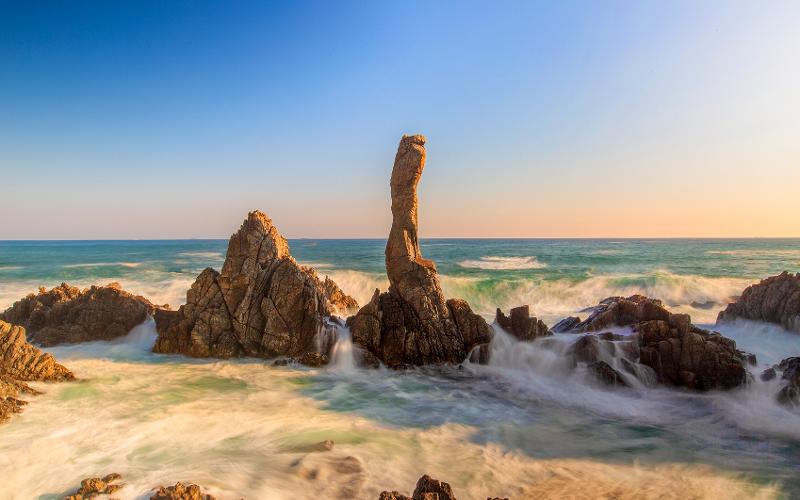
This is Chuam Chotdaebawi Rock as seen from Chogok Yonggul Chotdae Bawigil Trail in Samcheok, Gangwon-do Province. (Samcheok City Hall's official website)
Samcheok, Gangwon-do Province, a city renowned for its beautiful beaches and sunrise, is home to Chogok Yonggul Chotdae Bawigil Trail. Walk along the path from Chuam Chotdaebawi (Candlestick) Rock for about five minutes to see the distinctive geographical features of Geobukbawi (Turtle) Rock, Sajabawi (Lion) Rock and Yonggul (Dragon) Cave and the beautiful coastal scenery.
Legend says the cave, where small fishing boats can pass through, is where a big snake transformed into a dragon and ascended to heaven.
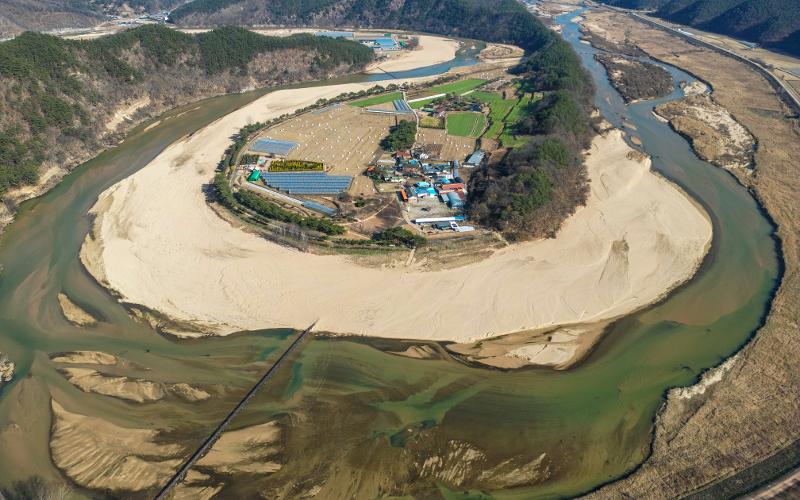
This view of Hoeryongpo Village is from the observatory on Biryongsan Mountain in Yecheon-gun County, Gyeongsangbuk-do Province. (Korea Tourism Organization)
Hoeryongpo Village in Yecheon-gun County, Gyeongsangbuk-do Province, got its name from the shape of the Neseongcheon Stream encircling the village that resembles a dragon twisting and turning. Climb to the observatory on Biryongsan Mountain, whose altitude is 240 m, to see the entire island village on land at a glance.
Near the mountain are many things to see and eat related to dragons including Yonggunghyanggyo (Dragon Palace Hyanggyo), with a hyanggyo being a government-run Confucian school in the provinces during the Goryeo and Joseon dynasties. Yonggung Station Theme Park and Yonggung sundae (blood sausage) are other highlights of this area.
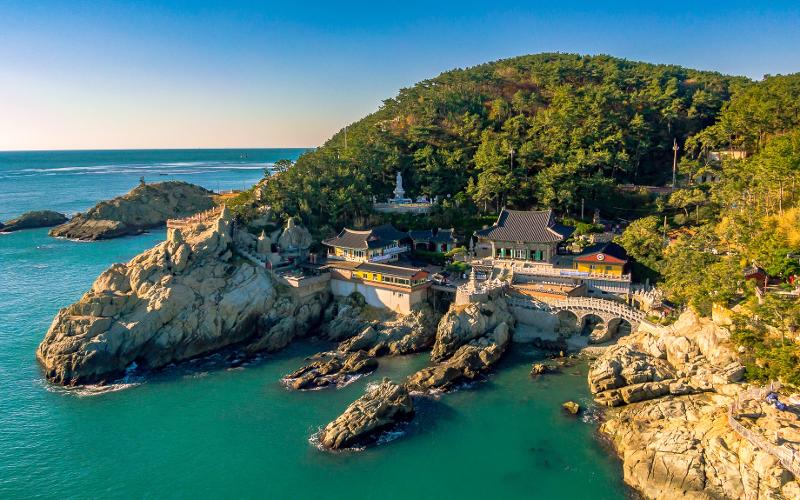
Haedong Yonggungsa Temple in Busan's Gijang-gun County is located by the sea. (Korea Tourism Organization)
Haedong Yonggungsa Temple in Busan's Gijang-gun County is a leading example of a dragon-related temple. It was founded in 1376, burned down during the Imjin War when Japan invaded Korea from 1592-98, and rebuilt in the 1930s as Bomunsa Temple.
The temple got its present name in the early 1970s, when the abbot Jeongam decided to rename it after he saw in a dream a white-robed Gwaneum, aka Avalokiteshvara or the Bodhisattva (enlightened being) of Compassion, riding on a dragon and ascending to heaven.
The location of Jinshisari Pagoda in front of Daewoongjeon (Main Buddha Hall) is called Yongduam (Dragon Head) Rock because it resembles a dragon's head. The site Jeryongdan Bangsaengteo is great for watching the sunrise and Yongmungyo Bridge attracts visitors who throw coins into the water to make a wish.
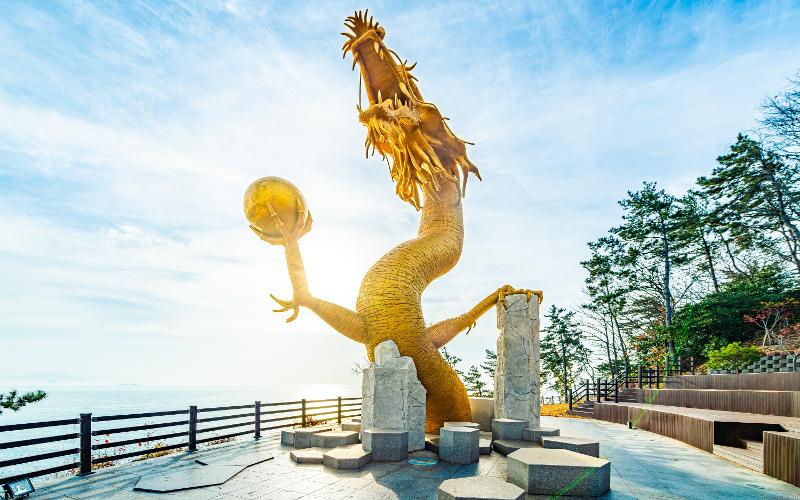
This sculpture of a dragon is on Mireumaru-gil Trail in Goheung-gun County, Jeollanam-do Province. (Korea Tourism Organization)
Mireumaru-gil trail got its name from mireu, a purely Korean word for "dragon" and maru, another purely Korean term for "floor." The 4-km trail is located in Goheung-gun County, Jeollanam-do Province, and walking along from Goheung Space Launch Observatory leads to the 120 m-tall Yeongnam Yong Rock, which was made from volcanic activity.
Legend says a dragon climbed the rock and ascended to heaven, thus the sculpture of a dragon atop the cliff holding a wish-fulfilling jewel is eye-catching.
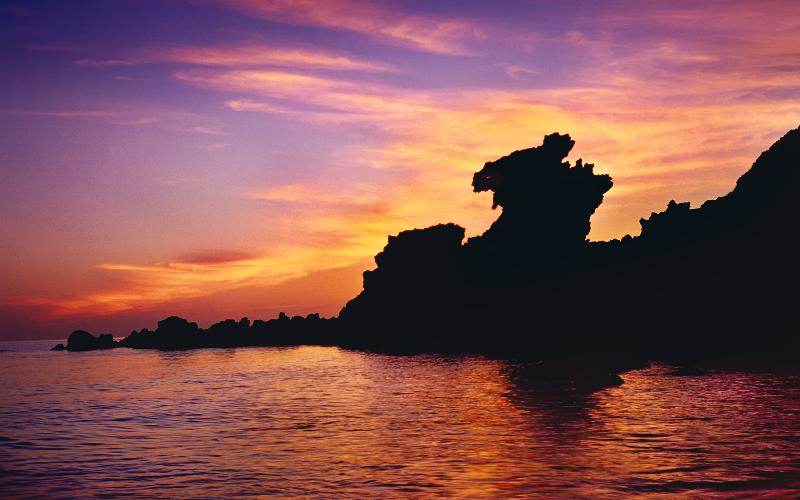
The scenic Yongduam Rock is on Jeju Island. (Jeju Tourism Organization)
Located 10 minutes from Jeju International Airport by car in Jeju City, Jeju Island, Yongduam Rock is a favorite of both domestic and foreign tourists. The rock got its name from a legend of a dragon that stole a jade bead from the god of Hallasan Mountain, fell to the sea after being struck by the deity's arrow, and whose body was submerged and petrified underwater with only its head turned to the sky.
Yongduam is a famous spot to see the gorgeous sunset. A popular course is to visit around sunset and walk to the nearby Yongyeon Cloud Bridge, a famous place for enjoying the nightscape.